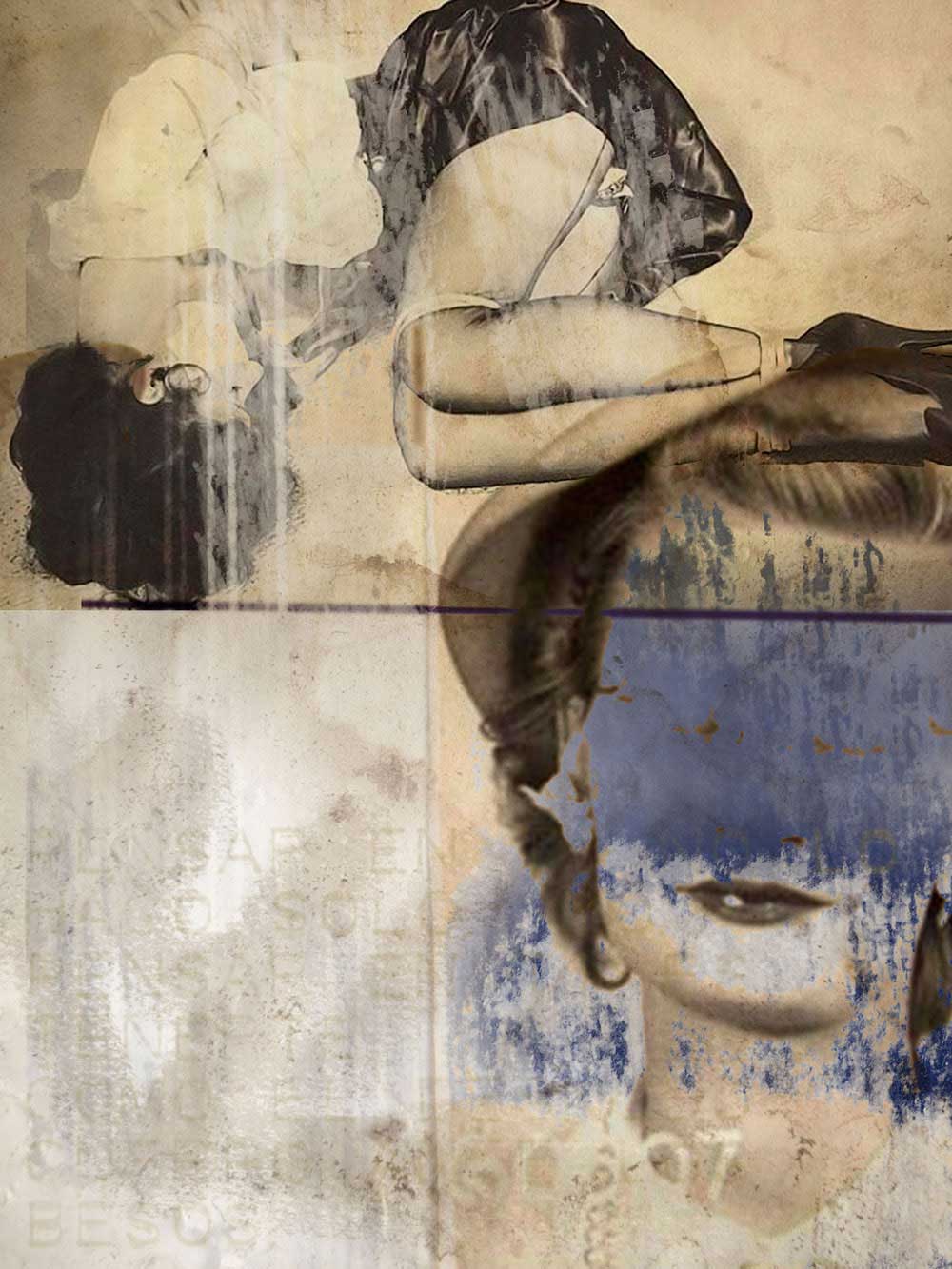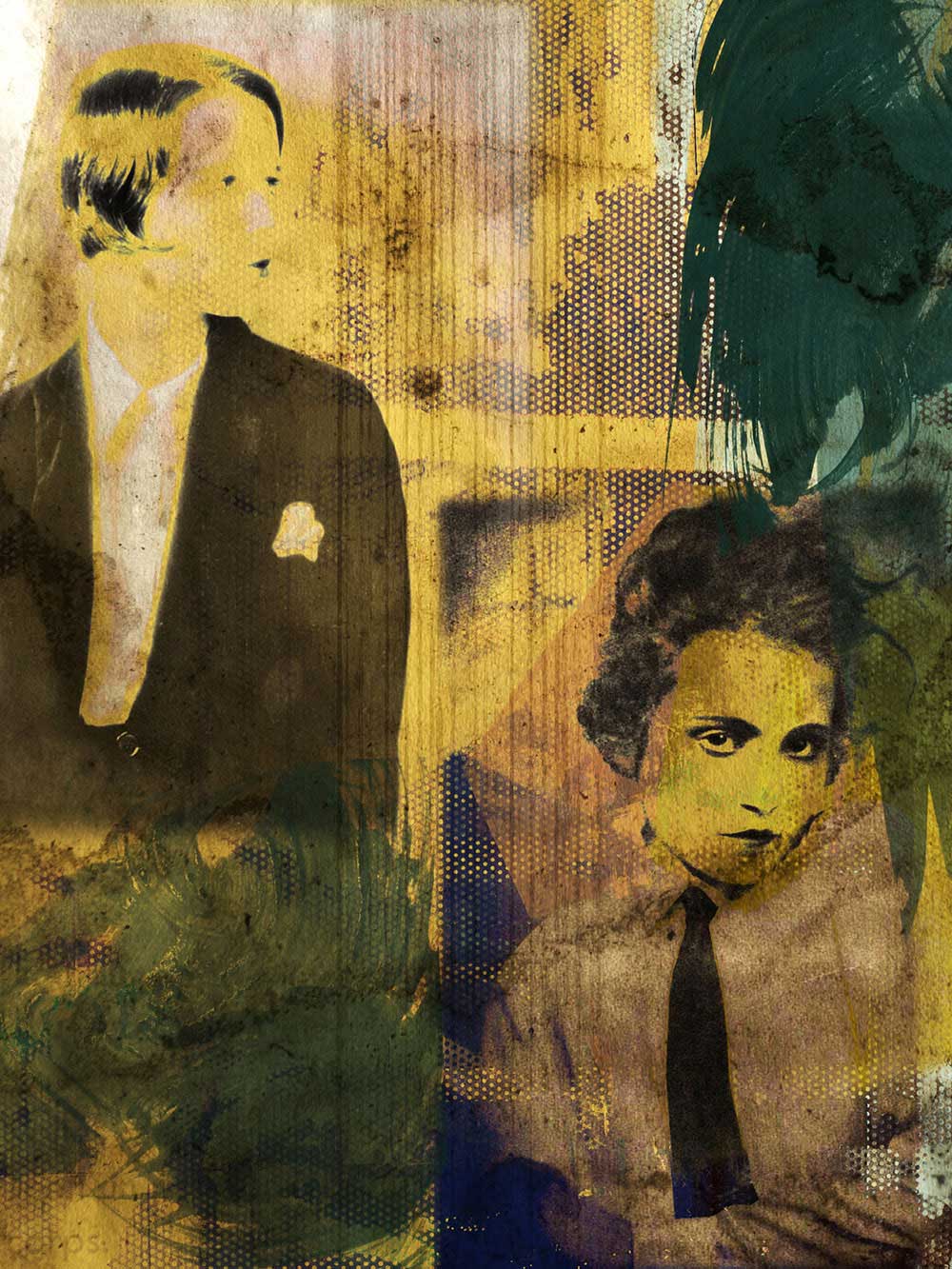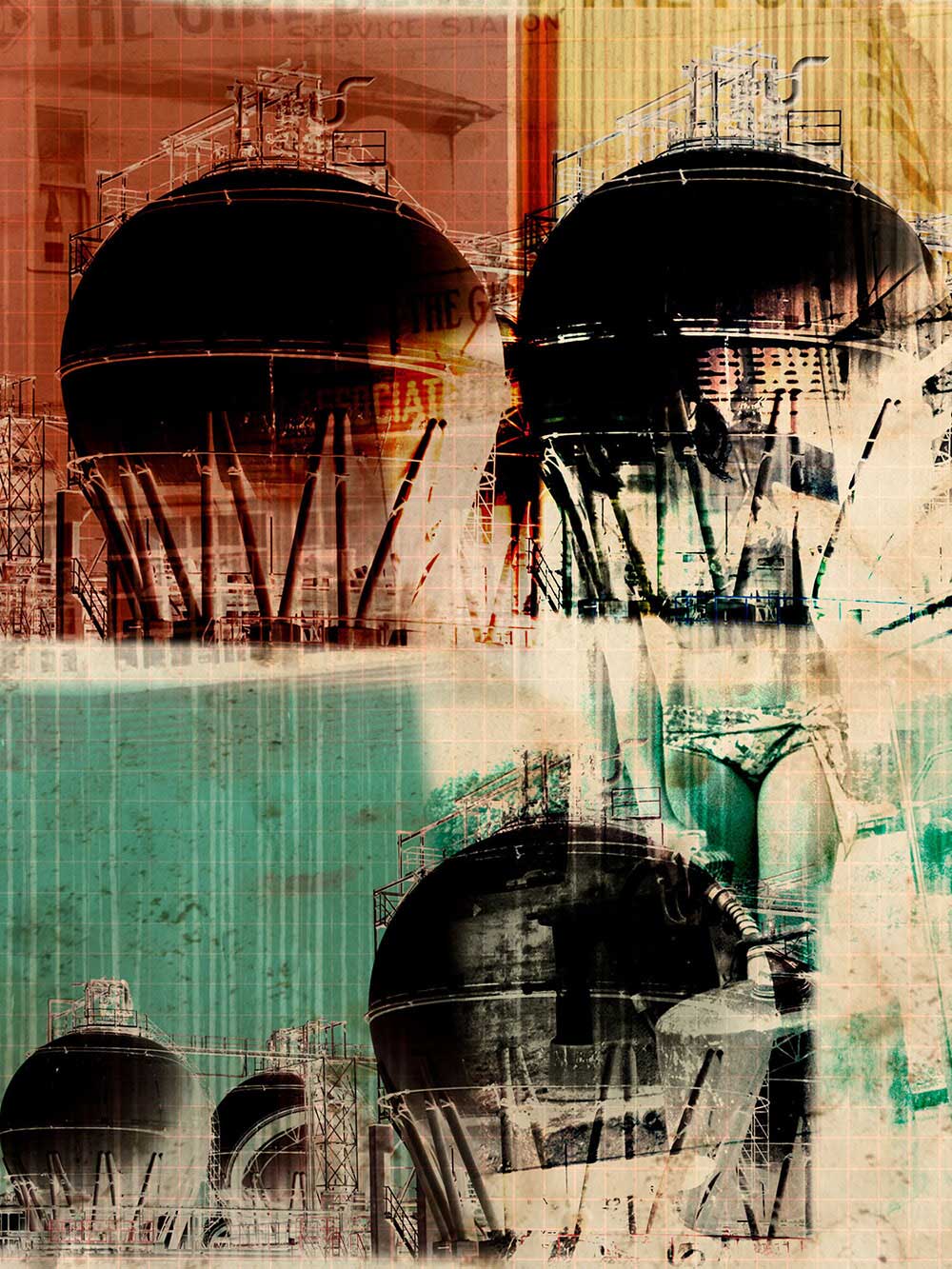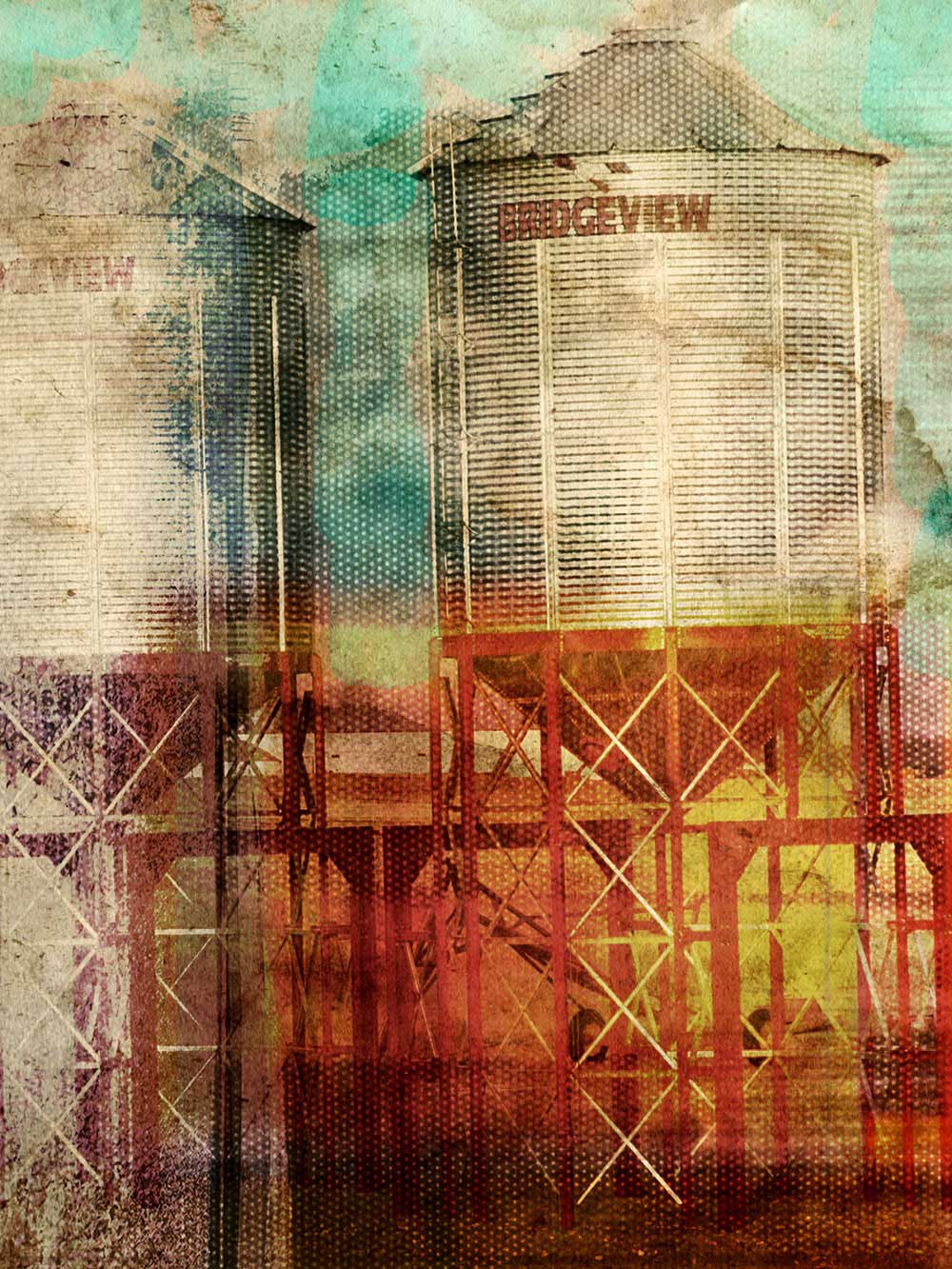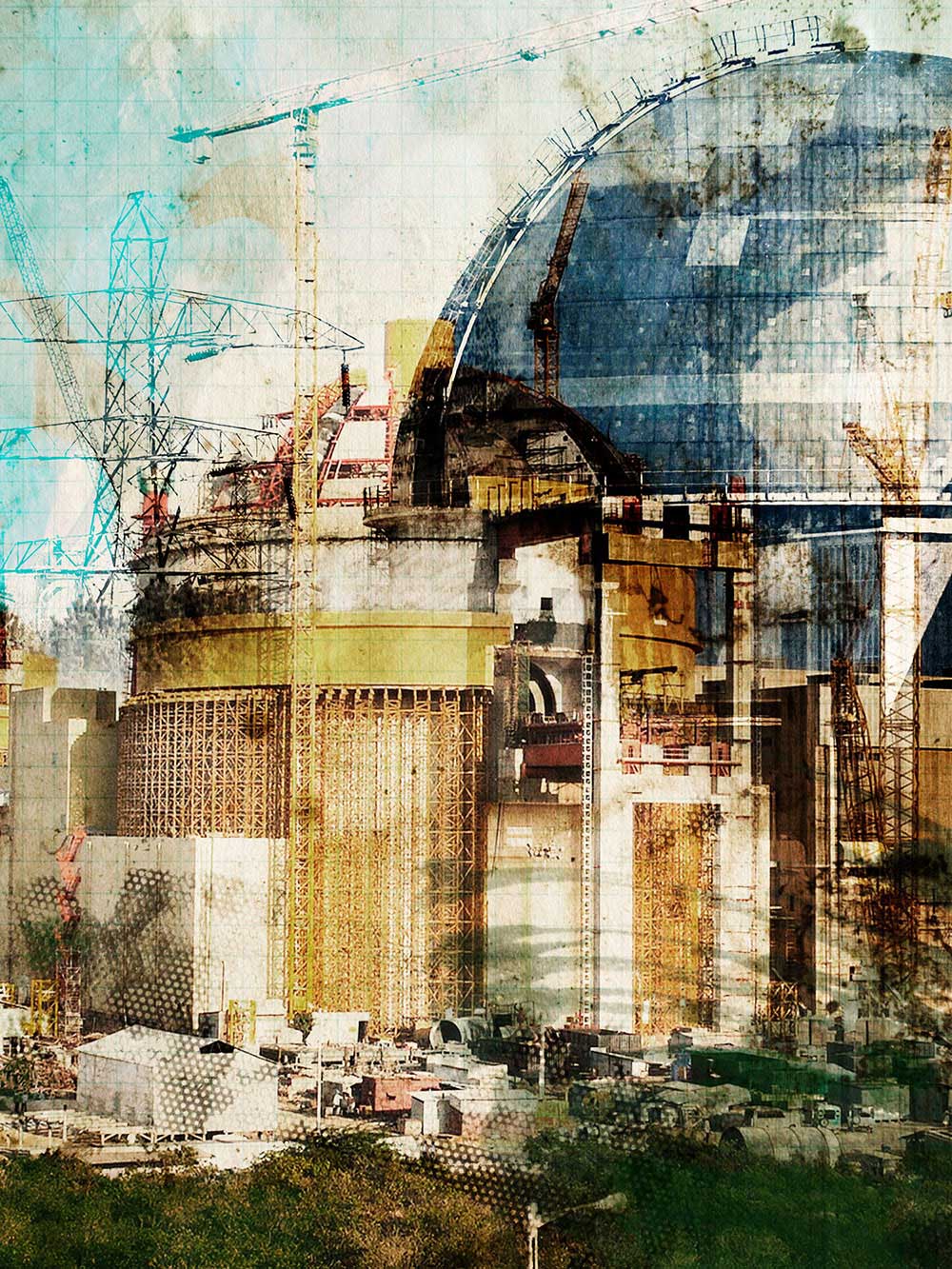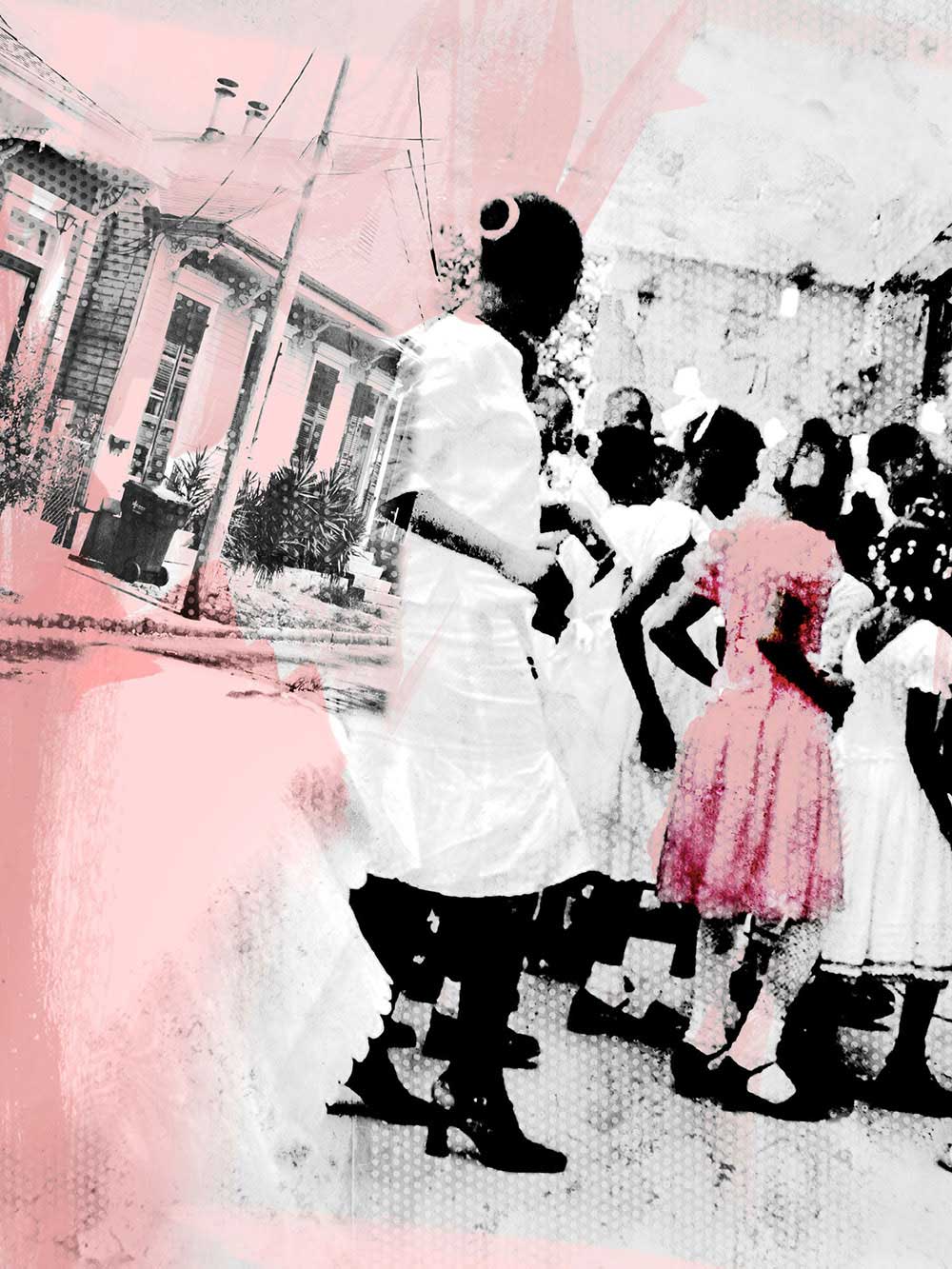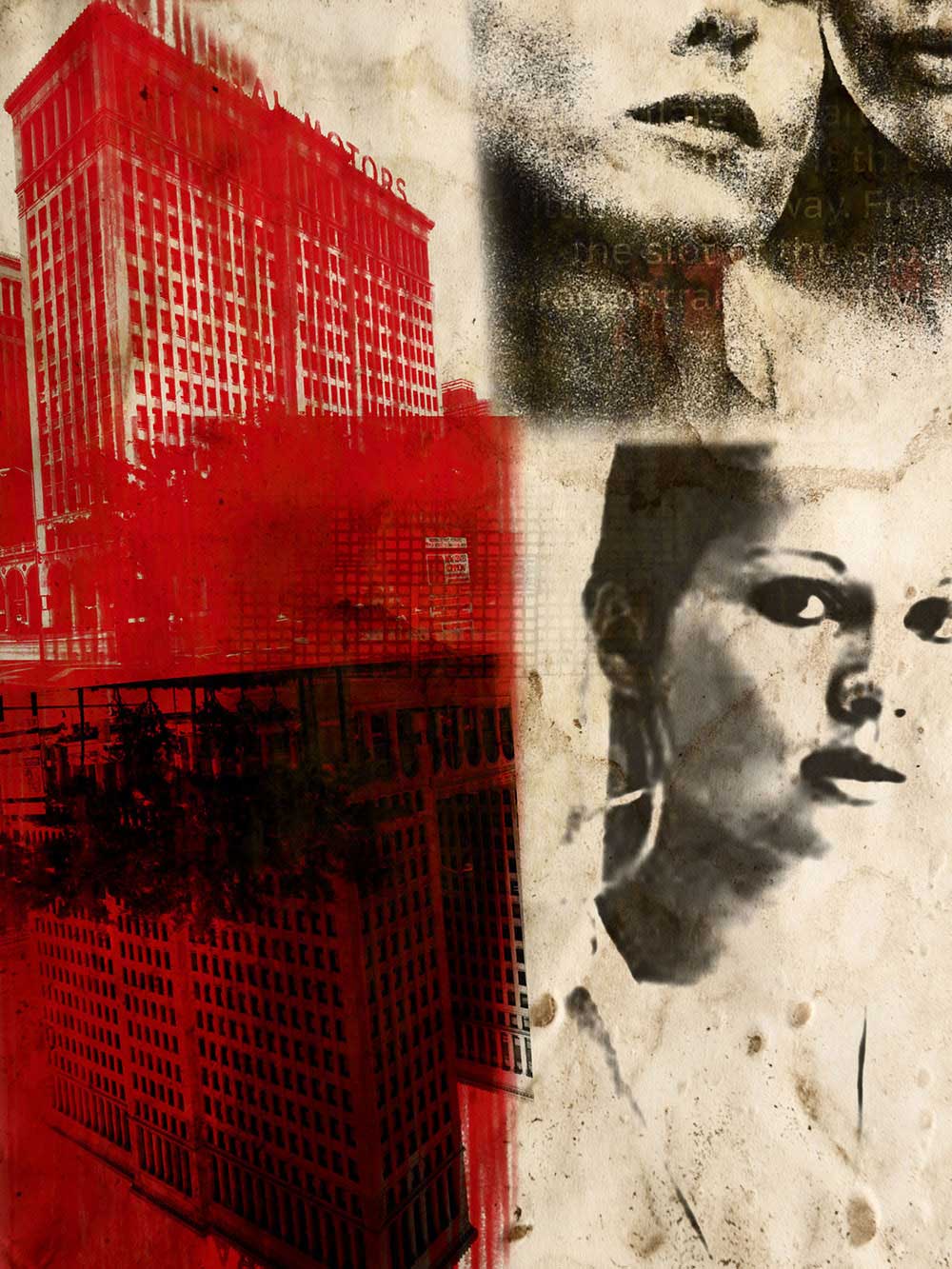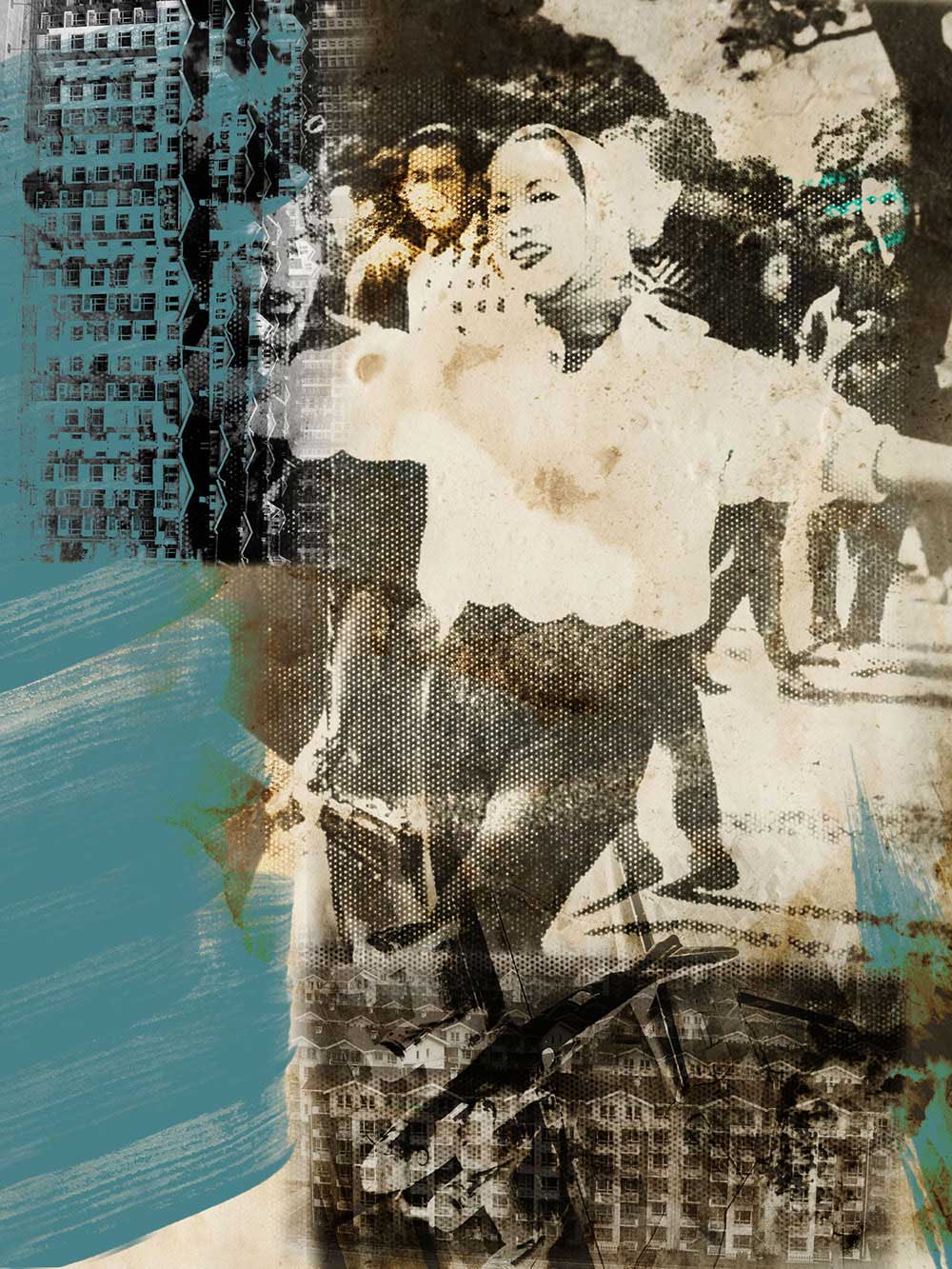With the Binary Code series, Max de Esteban continues his examination of our world, as mediated by and through technology, through creating photographic imagery that is informed by and utilizes the traditions of appropriation and remix.
As with his earlier bodies of work, the artist dispenses with the linear perspective inherent in Western art. He uses this as a key device in his examination of how technology is a determining factor in artistic expression, human relationships, and in our mediation of the world. Esteban’s photographs draw comparison to the assemblages of Robert Heinecken (1931–2006), and historical contextualization within the framework of the collages of the Surrealists, especially those of the Dadaists. Although the imagery is very much grounded in reality, the use of layering forces the view to question that reality.
“ … what Max is doing with his latest work, Binary Code. It is to draw our attention to the fact that in these times of “accelerated culture,” where it appears that we are all reduced to the deep raging digital terror, fake news, bitcoins and our algorithmically mediated world, that we as people, as artists, as people hoping against hope to try to make sense of things—and that against all of what the philosophers and physicists have told us—we must try to make sense of things in a senseless world, even if we cannot understand everything that is going on—Heisenberg and Schroedinger rule as Zuckerberg and Brin do also rule!”
—Bill Kouwenhoven, Writer.
The exhibition brings together nine artworks, from the larger collection of photographs. The photographs are a colorful concoction of collages, within individual elements carefully selected from a broad range of source material. There is no definitive meaning attached to each artwork, thus sending the viewer on a trajectory of multiple narratives that excite the imagination. Elements in each photograph—a woman’s face, industrial structures, silos, graphics, swathes of color—at once seem positively familiar, and yet unknown.
This is the third solo exhibition by the artist at the Klompching Gallery, and follows the successful exhibition of Binary Code at the Mirbach Palace (Bratislava, Slovakia), FotoFest Biennal (Houston, Texas) and the Pingyao International Photography Festival (Pingyao, China).
Max de Esteban (b. 1959) is a Fulbright Alumni, who holds a PhD from the Universitat Ramon Llull in Catalonia and a Masters from Stanford University. His work has been featured at the Deutsches Technikmuseum, Recontres Internationales at the Palais de Tokyo, Darmastädter Tage der Fotografie, and La Virreina Centre de la Imatge among others. Esteban will be showing work in the prestigious Bauhaus and Photography – On the New Vision in Contemporary Art exhibition, part of the jubilee program 100 Years Bauhaus in Germany later this year.
His artworks are held in several notable collections, including the Museu de Arte Modena do Rio de Janeiro, Deutsches Technikmuseum, Central European House of Photography (Bratislava) and The Museum of Fine Arts, Houston. Monographs on his work include Twenty Red Lights (La Virreina Centre de la Imatge – La Fábrica, 2017), Propositions (La Fábrica, 2015), Heads Will Roll (Hatje Cantz, 2014) and Elegies of Manumission (Nazraeli Press, 2012), and is featured in the Dictionary of Spanish Photographers (La Fábrica, 2014).
Klompching Gallery was established in Dumbo, Brooklyn in September 2007. Owned and operated by Debra Klomp Ching and Darren Ching, the gallery quickly established itself as a gallery with an extraordinary roster of artists from which to purchase some of the best examples of contemporary photography.
Klompching Gallery
September 14–October 26, 2018
89 WATER STREET BROOKLYN, NY 11201

